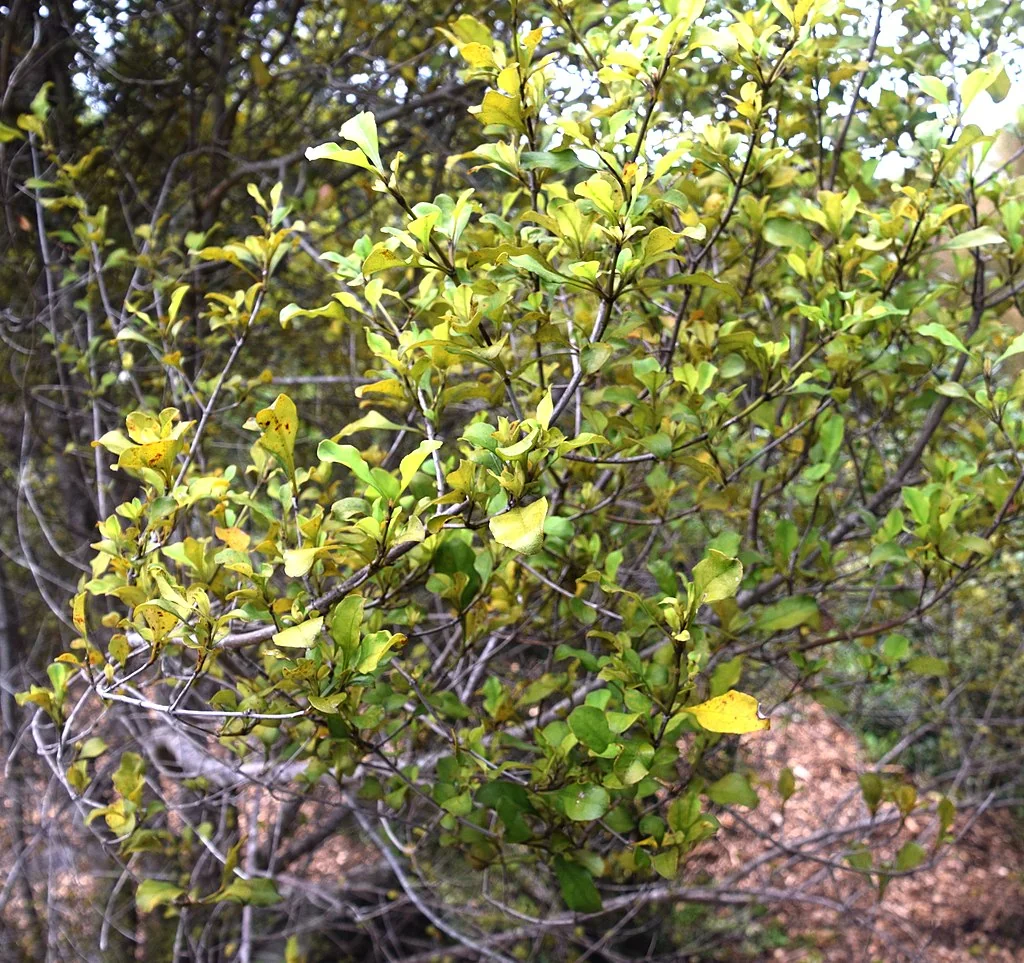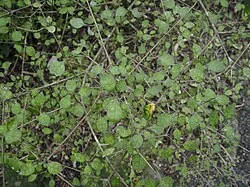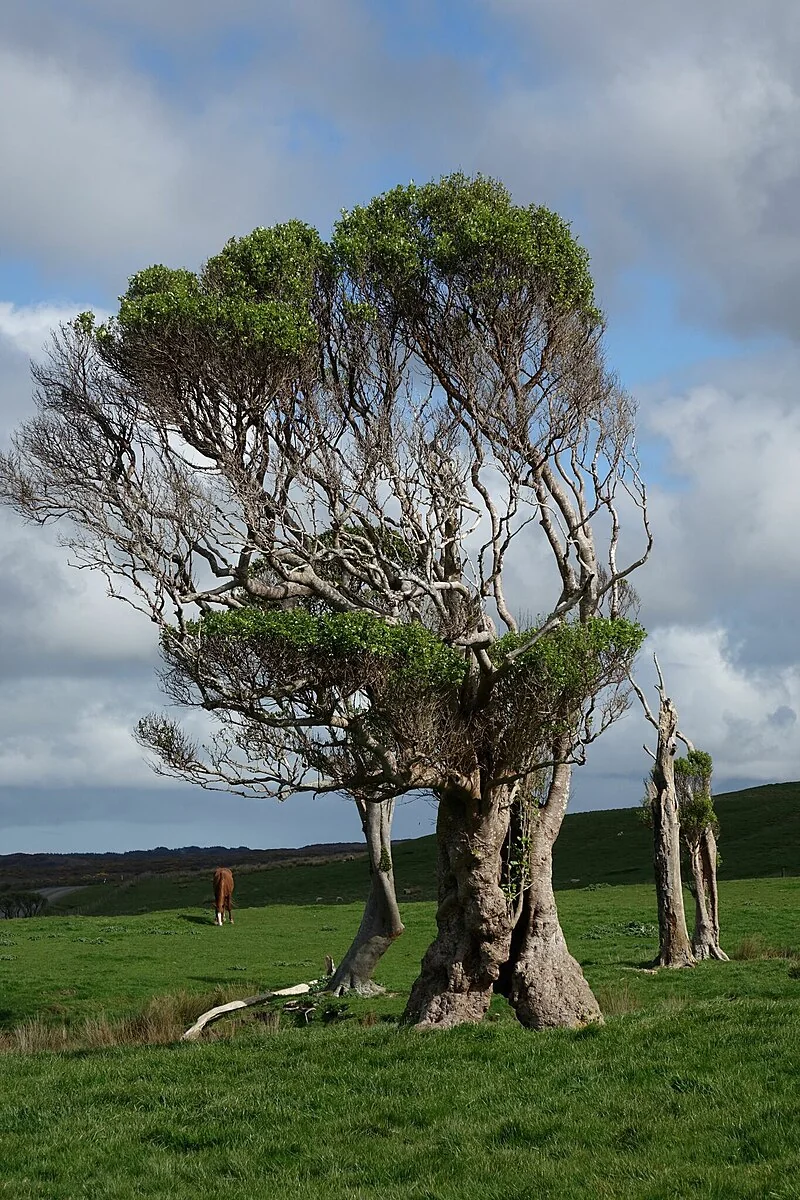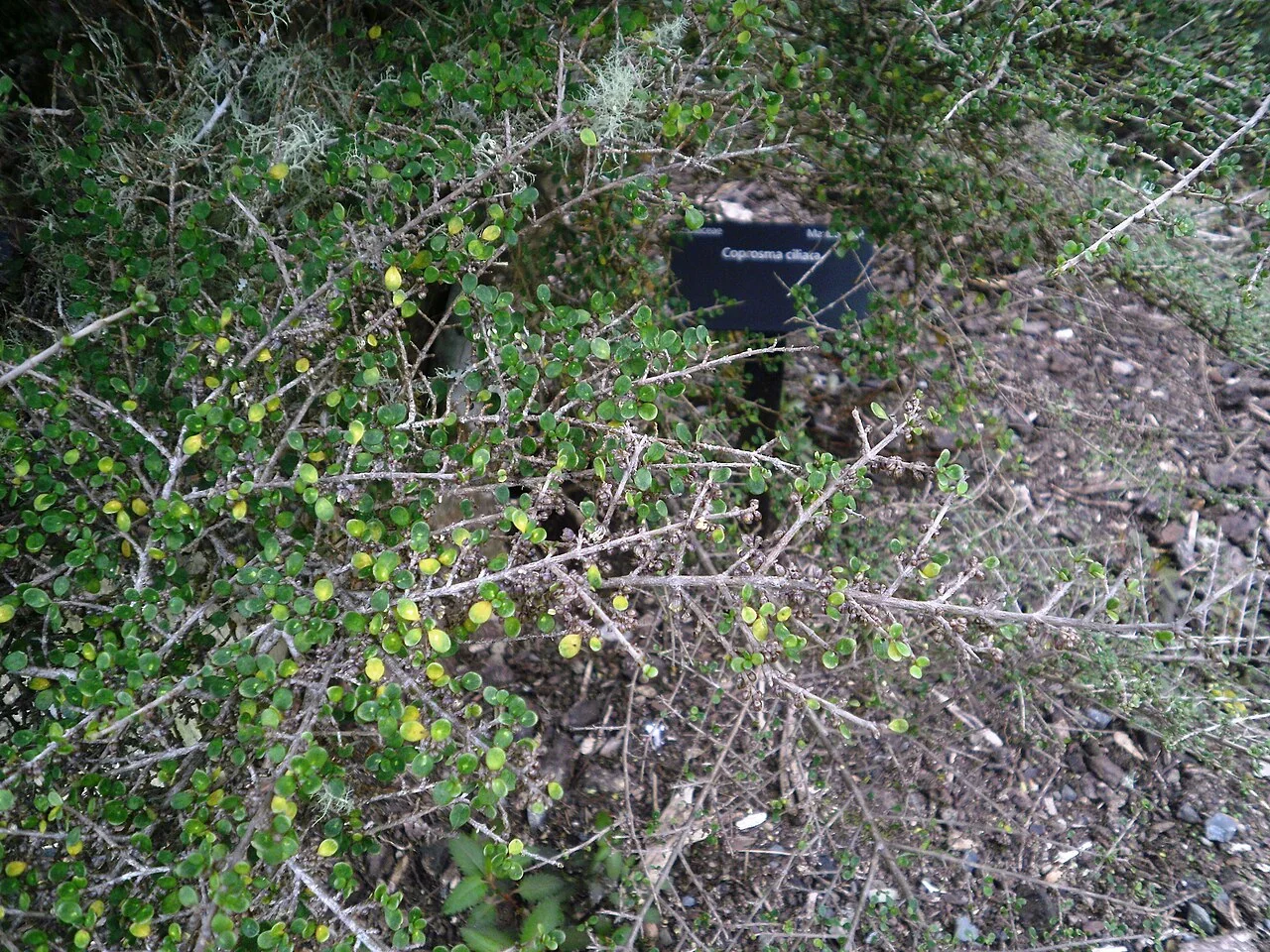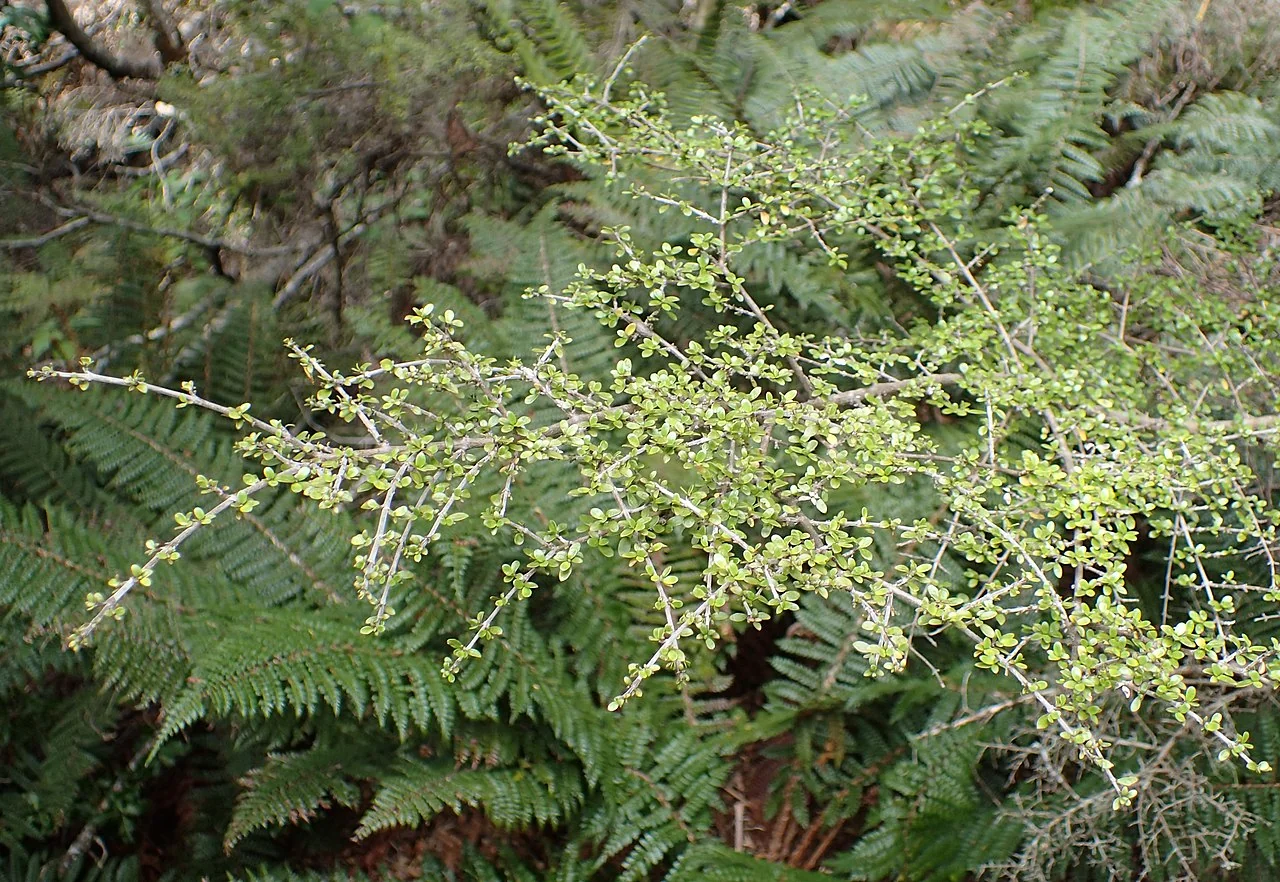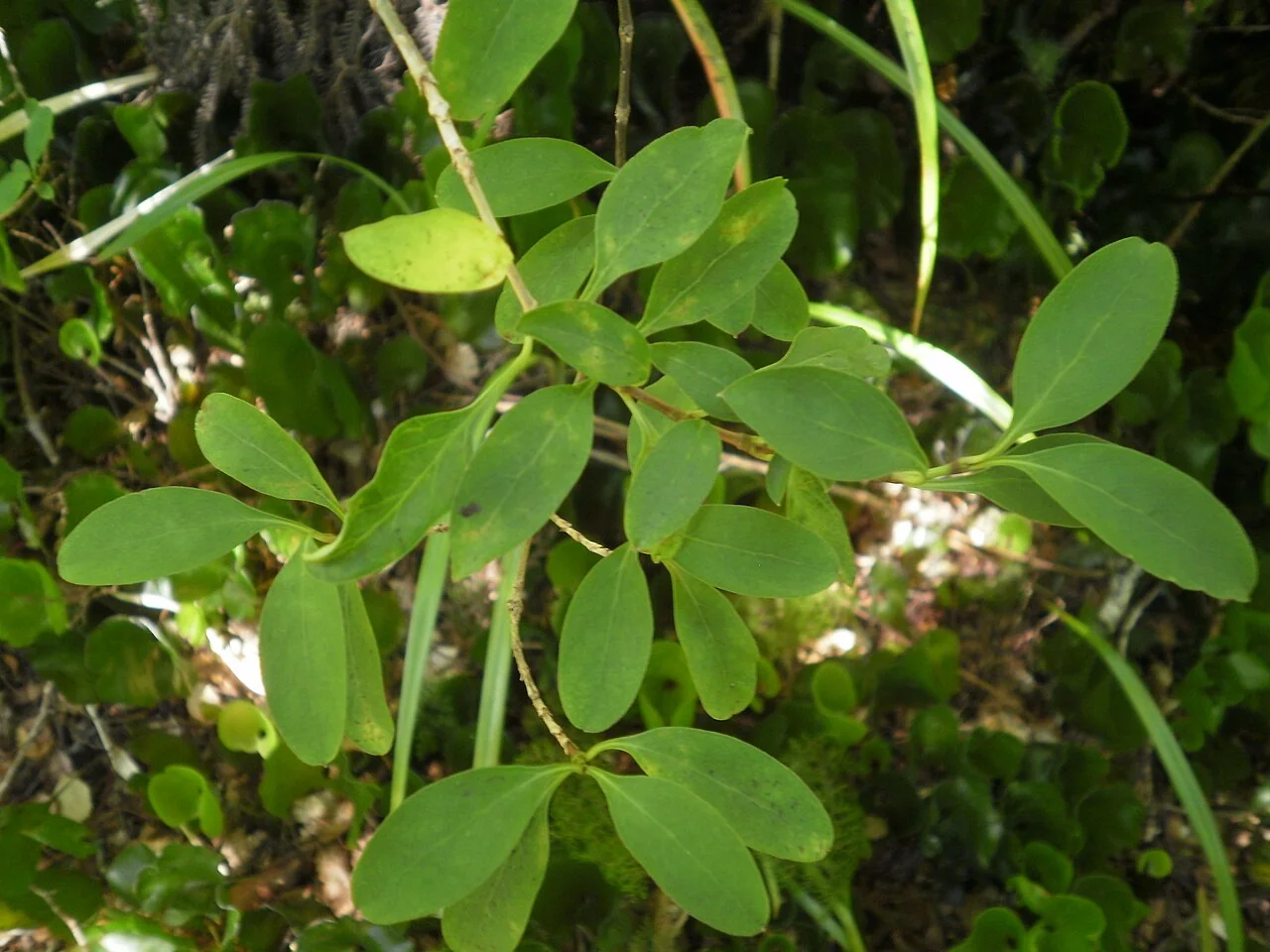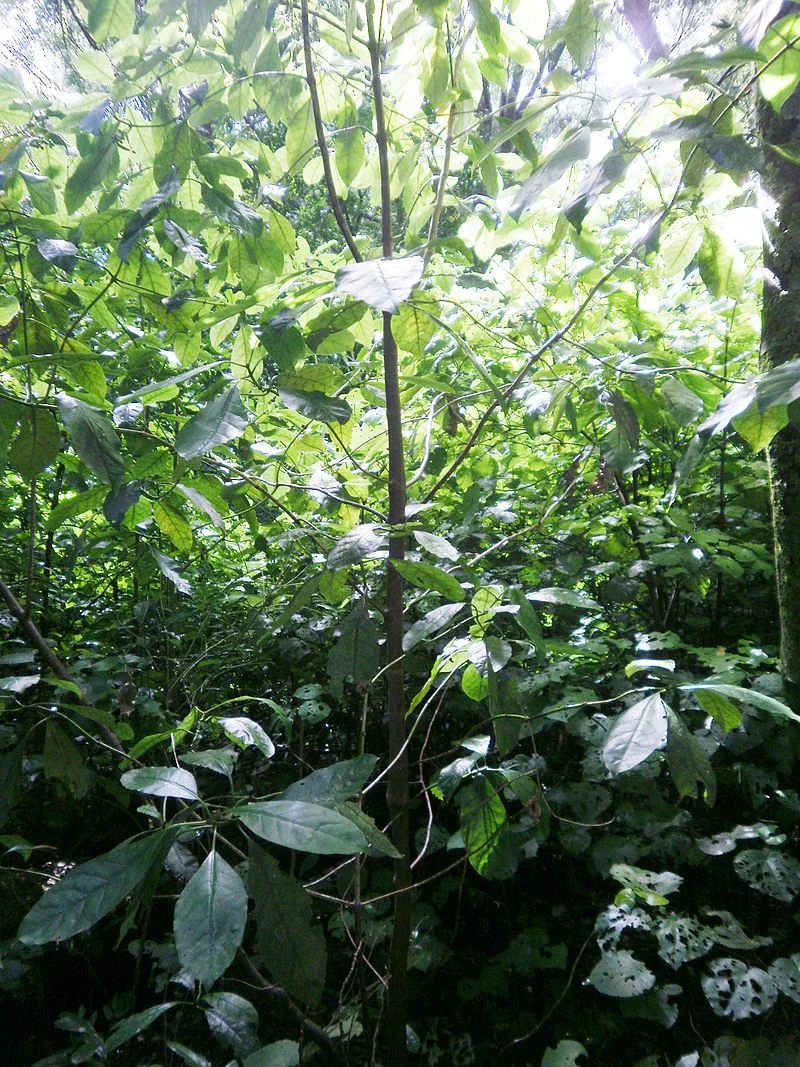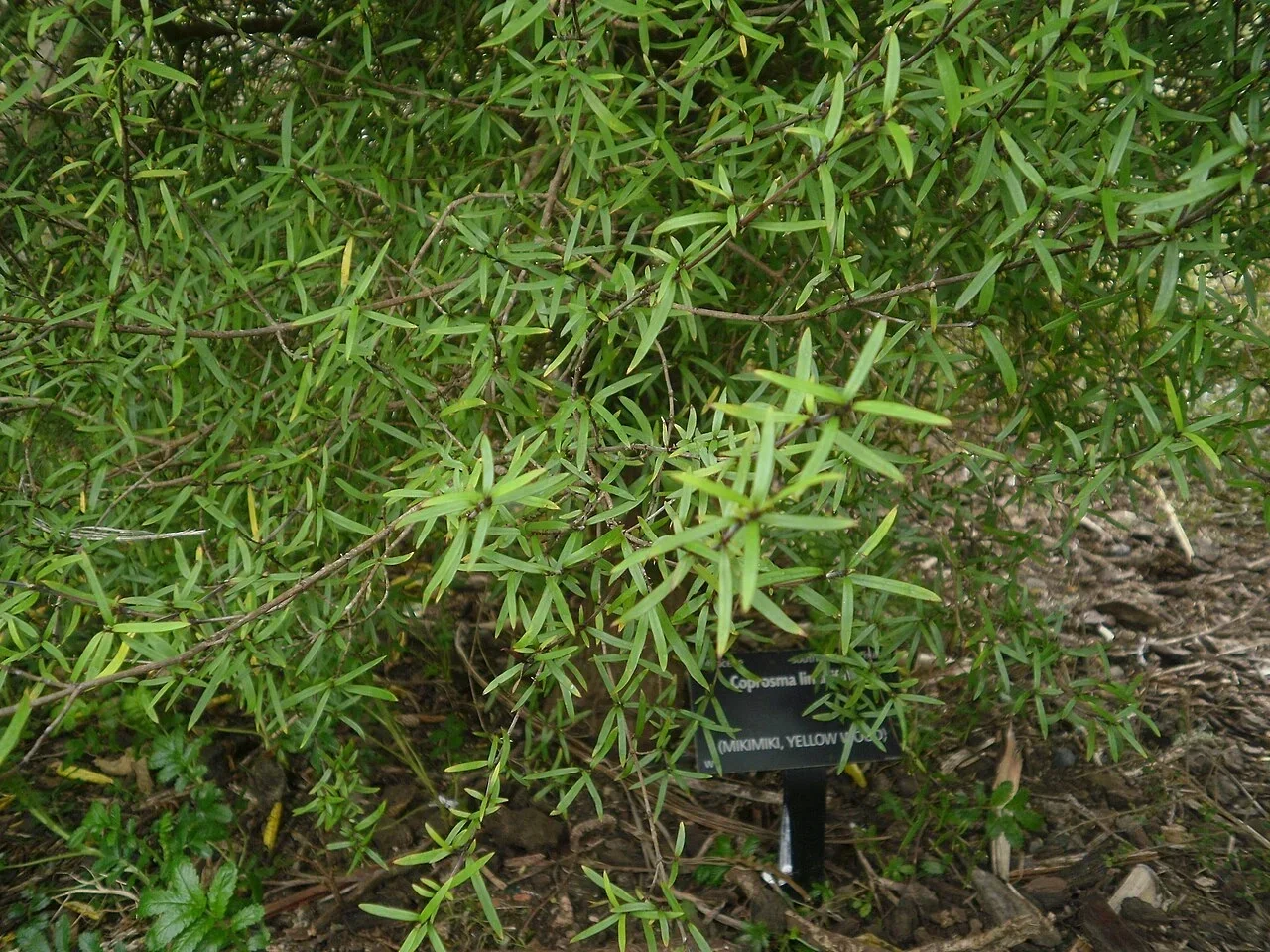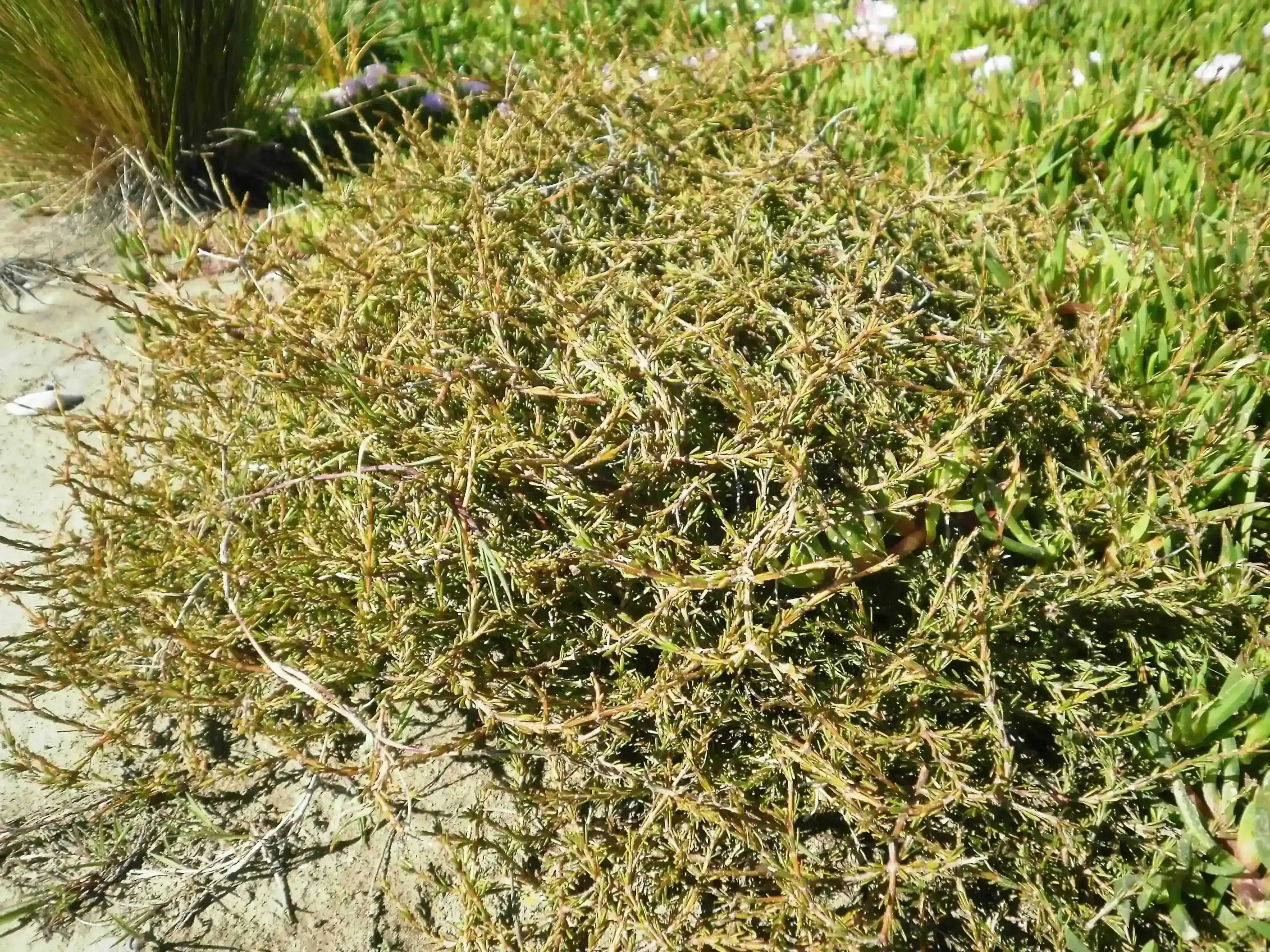
Sand Coprosma
Coprosma acerosa
Introduction
Introduction Overview
Sand Coprosma, scientifically known as Coprosma acerosa , is a remarkable low-growing native shrub that has evolved specifically to thrive in New Zealand's challenging coastal dune environments, where its specialized root system and hardy constitution make it an essential sand-binding species. This prostrate to low-spreading shrub typically grows 0.3-1 meter high but can spread several meters wide, featuring distinctive needle-like leaves 5-15mm long that are often bronze-tinted and arranged in small clusters along the wiry branches, creating an attractive fine-textured groundcover effect. Endemic to New Zealand and found naturally on coastal sand dunes, sandy beaches, and sandy river terraces throughout both main islands, Sand Coprosma produces tiny inconspicuous flowers followed by small translucent white to pale orange berries that provide food for coastal birds. The plant 's extraordinary ability to stabilize shifting sands through its extensive fibrous root network, combined with its tolerance of salt spray, drought, and wind, makes it invaluable for coastal revegetation projects and erosion control, while in cultivation it serves as an excellent groundcover for challenging sites with poor soils, creating naturalistic coastal garden themes where its subtle beauty and ecological importance can be fully appreciated. native shrubs

Plant Description
Botanical Features
Sand Coprosma (Coprosma acerosa) is a low-growing, sprawling evergreen shrub native to New Zealand, typically found on the landward side of sand dunes in coastal areas. It forms a cushion-like mass, often up to 2 meters in diameter, with slender, flexible, interlacing branches. The leaves are small, yellowish-green, needle-like, and leathery, often with a bronze tint, arranged in small clusters. It produces tiny, inconspicuous green flowers followed by translucent white to pale orange berries that are attractive to birds. This hardy plant is well-adapted to harsh coastal conditions, tolerating poor soil, dry conditions, and salt exposure.
Quick Facts
Quick Facts Overview
| Scientific Name | Coprosma acerosa |
|---|---|
| Height | 0.3-1 meter (1-3 ft) |
| Spread | 1-3 meters (3-10 ft); forms low, spreading mats |
| Water Needs | Very low ; drought-tolerant once established |
| Light | Full sun to partial shade |
| Frost Tolerance | Moderate; tolerates light frosts |
| Salt Tolerance | Very high ; thrives in coastal conditions |
| Growth Rate | Moderate; establishes quickly in sandy soils |
| Lifespan | Perennial; long-lived in suitable conditions |
Climate Best Suited to
Sand coprosma is native to New Zealand and thrives in the country's diverse climate conditions. It adapts well to various regional climates throughout the country.
Regional Suitability
| City | Climate Suitability |
|---|---|
| Whangārei | Ideal |
| Auckland | Ideal |
| Hamilton | Ideal |
| Tauranga | Ideal |
| Rotorua | Ideal |
| Gisborne | Ideal |
| New Plymouth | Ideal |
| Napier | Ideal |
| Whanganui | Ideal |
| Palmerston North | Ideal |
| Wellington | Ideal |
| Nelson | Ideal |
| Christchurch | Ideal |
| Dunedin | Ideal |
| Invercargill | Ideal |
Natural Habitat
Natural Habitat Overview
Sand coprosma is naturally found in specific habitats throughout New Zealand. Understanding its natural environment helps in providing appropriate growing conditions in cultivation.
Plant Conservation
Coprosma acerosa, commonly known as sand coprosma, is a shrub native to New Zealand. It is currently classified as "At Risk - Declining" under the New Zealand Threat Classification System.
This coastal plant, often found on the landward side of sand dunes, faces several threats. These include habitat modification and loss due to dune reclamation, as well as significant competition from introduced species such as marram grass (Ammophila arenaria) and other weeds. Browsing by lagomorphs (rabbits and hares) also contributes to its decline.
Soil Requirements
Requires well -draining, sandy soils. Tolerates poor , dry soils and salt exposure.
- Sand dunes and coastal soils
- Low fertility tolerated
Light Requirements
Prefers full sun but tolerates part shade.
- Full sun for best growth
- Part shade tolerated
Water Requirements
Very drought -tolerant once established.
- Water young plants during establishment
- Minimal water needed after
Planting Guide
When to Plant
The best time to plant Sand coprosma is during spring or autumn when soil temperatures are moderate and rainfall is reliable.
How to Plant
Dig a hole twice the width of the root ball and slightly deeper. Place Sand coprosma in the hole, backfill with soil, and water thoroughly. Mulch around the base to retain moisture.
Ecological Role
Wildlife Interactions
Sand coprosma plays an important ecological role in New Zealand's native ecosystems. It provides habitat and food for native wildlife and contributes to ecosystem health and biodiversity.
Uses and Significance
Garden Uses
Ecological and Cultural Significance
Ecologically, Coprosma acerosa plays a crucial role in coastal ecosystems by stabilizing sand dunes and providing habitat and food for native birds and skinks through its small white berries. Culturally, it is known by Māori names such as tarakupenga and tātaraheke, reflecting its traditional uses, which included medicinal purposes and as a food source. Its hardiness and resilience make it a significant part of New Zealand's natural heritage.
Landscaping Uses
Landscaping Uses Overview
Sand coprosma is highly valued in landscaping for its aesthetic appeal and practical benefits. It can be used in various garden styles and landscape applications.
Seasonal Care
Spring
Check for new growth and prune lightly to shape. Apply mulch to retain moisture and suppress weeds as the plant comes out of winter dormancy.
Summer
Water young plants during prolonged dry spells. Established plants are drought-tolerant, but occasional deep watering helps in extreme heat.
Autumn
Remove any dead or damaged branches. This is a good time to propagate by taking semi-hardwood cuttings.
Winter
Minimal care required. Check for wind or salt damage in exposed coastal sites and tidy up as needed.
Pruning
Pruning Techniques
Sand Coprosma ( Coprosma acerosa ) requires minimal pruning. Remove any dead or damaged branches in late winter to maintain shape and encourage healthy growth. Avoid heavy pruning, as this plant naturally forms a low, spreading mat.
How to Grow Sand Coprosma
From Seed
Sand Coprosma (Coprosma acerosa) bears orange drupes whose fleshy pulp surrounds small seeds. For best germination, collect fully ripe fruit in late summer to autumn, macerate in water, and separate seed from pulp. Rinse thoroughly and sow soon after cleaning; fresh seed germinates more readily. Use a freeâ draining seed-raising mix and cover lightly (2-3 mm). Maintain bright light with shelter from harsh midday sun, keep evenly moist but never waterlogged, and provide good airflow limit damping-off. Cool to mild temperatures around 15-22 °C are suitable; germination typically begins within 3-8 weeks but can be staggered. Prick out seedlings into tubes containing a sandy, gritty mix, and grow on in high light with modest feeding: coastal species prefer lean soils. Harden off gradually, then plant into sunny, very freeâ draining sites such as dunes, sandy banks or gravelly coastal gardens. Mulch with coarse sand or fine gravel to reduce evaporation and mimic natural conditions.
From Semi-Hardwood Cuttings
Cuttings are a reliable way to clone desirable forms. Take semi-hardwood cuttings 6-8 cm long from healthy, non-flowering shoots in late spring to early autumn. Remove the lower leaves, lightly wound the base if stems are smooth, and treat with a low-to-moderate rooting hormone. Insert into a very free-draining medium such as 1:1 perlite and coarse sand. Provide bright light, gentle bottom heat if available (18-22 °C), and high humidity without prolonged leaf wetness. Keep the medium just moist. Roots usually form in 4-8 weeks. Pot on carefully into a sandy, well-drained mix and grow on in high light with moderate watering. Harden off before planting out in coastal, sunny positions with sharp drainage and wind exposure: conditions that suit this dune-binding shrub.
Pests and Diseases
Common Pests
Sand coprosma is generally resistant to most pests due to its native adaptations. However, it may occasionally be affected by common garden pests such as aphids or scale insects.
Disease Prevention
To prevent diseases, ensure good air circulation around Sand coprosma and avoid overwatering. Remove any diseased plant material promptly to prevent spread.
Cultural Significance
Sand Coprosma (Coprosma acerosa) holds cultural significance for Māori, who knew it by names such as tarakupenga and tātaraheke. Its dense, mat-forming growth was traditionally valued for stabilizing coastal dunes, protecting sacred sites and resources from erosion. The berries were also a food source, and the plant may have had medicinal uses in rongoā (traditional Māori medicine).
Bonus Tip
Sand Coprosma (Coprosma acerosa) is an excellent choice for stabilizing coastal sand dunes and preventing erosion. Its extensive fibrous root system helps bind the sand, and its tolerance to salt spray, drought, and wind makes it invaluable for coastal revegetation projects. Consider planting it in challenging, exposed sites where other plants struggle to thrive.
